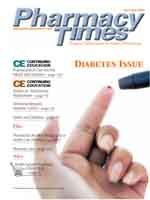Drug Diversion and Health Care Fraud
Prescription drug abuse in America, although nothingnew, continues to be one of the most prevalent formsof abuse in this country. Although there are a varietyof ways to divert and abuse pharmaceuticals, the abuse ofhealth care insurance seems to remain a popular method.
Well over a decade ago, my investigators encountered awoman who was seeing 69 doctorsat the same time. She wasswindling them out ofdiazepam and hydrocodoneproducts, all while covered byone national health care insurerover an 18-month period. Shewas using over 20 pharmacies,and she bilked her insurancecompany out of more than$80,000 in bogus doctors' visits,procedures, and prescriptiondrugs. At that time, employeesat this national health insurerhad no clue that this personwas fraudulently obtainingthese services and drugs at itsexpense. Since then, this andother health care insurers havetaken steps to identify this massiveform of health care fraud.
"Doctor shoppers" account fora large percentage of the use ofhealth care fraud while committingprescription drug offenses. The average doctor shopper islikely seeing at least 5 practitioners at one time and generatingover $10,000 each in health care fraud every year. Althoughthe example above involved private health care fraud, publichealth insurance by no means escapes the scammers.
Medicaid and workers' compensation programs have longbeen targets of doctor shoppers, as violators take advantageof the bureaucracy associated with large governmental programs.The absence of safeguards, little or no money to hireinvestigators and medical reviewers, and the reluctance ofreporting these criminals to law enforcement authorities allcontribute to the problem.
Many governmental entities that oversee Medicaid andworkers' compensation programs are making strides to combatpharmaceutical diversion and health care fraud. Suspectedviolators can be restricted to one pharmacy for theirdrugs, although frequently little or nothing is done to prosecutethese oftentimes felony drug offenders.
The best means currently available to combat these crimesis for states to develop and use a prescription-monitoringprogram. The program needs to include all controlled substancesand to provide law enforcement with access to theinformation in order to investigateand vigorously prosecutethose committing drug diversionand related health carefraud crimes.
With health care insurancerising and continuing to be aconstant political issue nationwide,everything possible needsto be done to reduce the financialdamage. Private and publicinsurers need to continue toimprove the monitoring ofthose who are seeing multiplepractitioners and pharmacies inorder to illegally obtain prescriptiondrugs.
Health care professionals needto continue to improve theirdiligence in dealing with prescriptiondrug seekers. Thesecriminals must be identified andreported, if those addicted tothese substances are to receiveopportunities for rehabilitation, and if those trafficking indrugs are to receive jail time.
Last, but not least, my peers in law enforcement need tomake prescription drug abuse and health care fraud theirhighest priorities. Nationally, health professionals are frustratedevery day because of law enforcement's apparent lackof concern for pharmaceutical diversion. As I have mentionedmany times, cooperation is the key to putting a significantdent in this national drug problem.
John Burke, director of the Warren County, Ohio, drugtask force and retired commander of the CincinnatiPolice Pharmaceutical Diversion Squad, is a 32-year veteranof law enforcement. For information, he can bereached by e-mail at burke@choice.net, via the Web sitewww.rxdiversion.com, or by phone at 513-336-0070.

